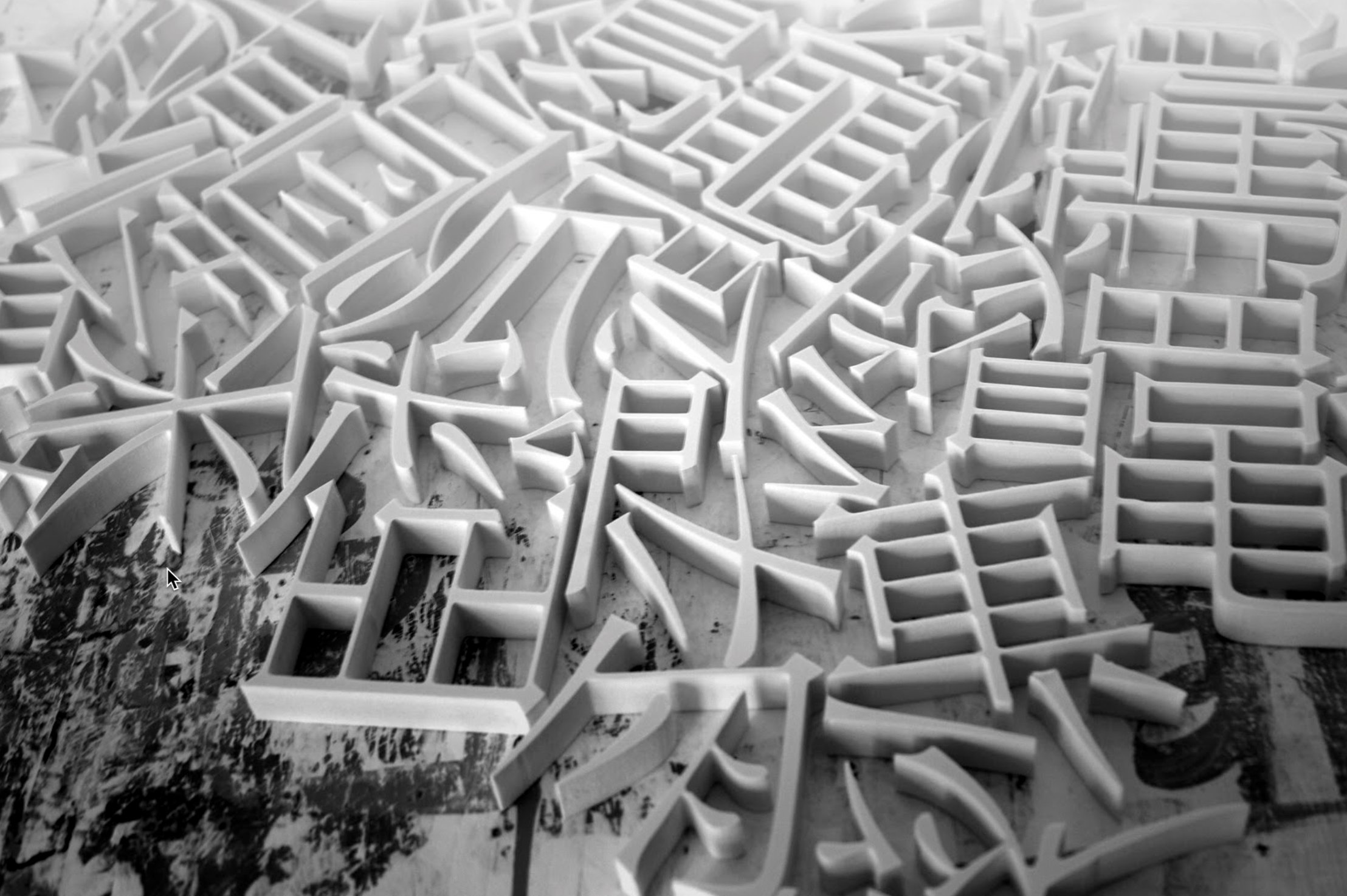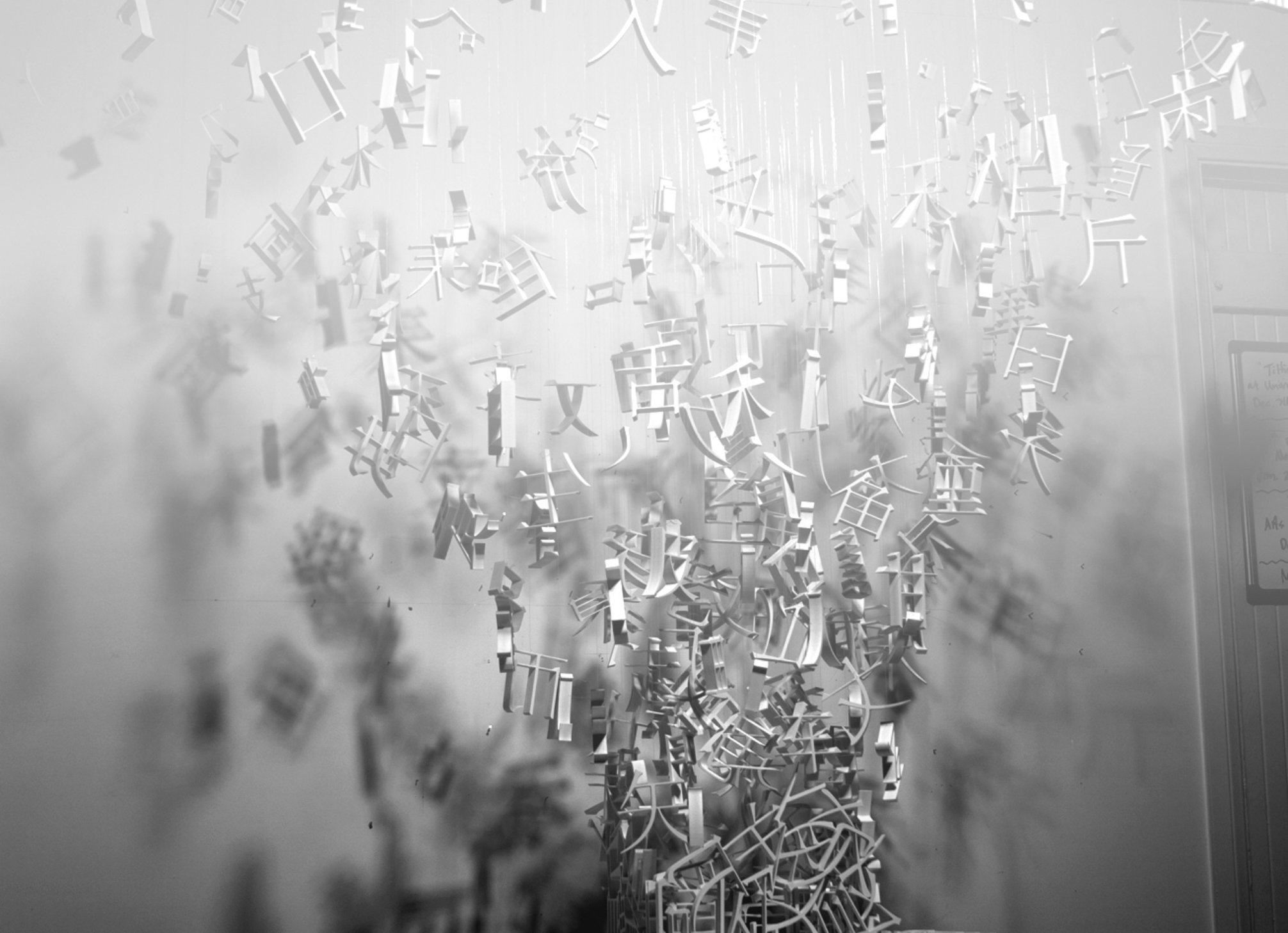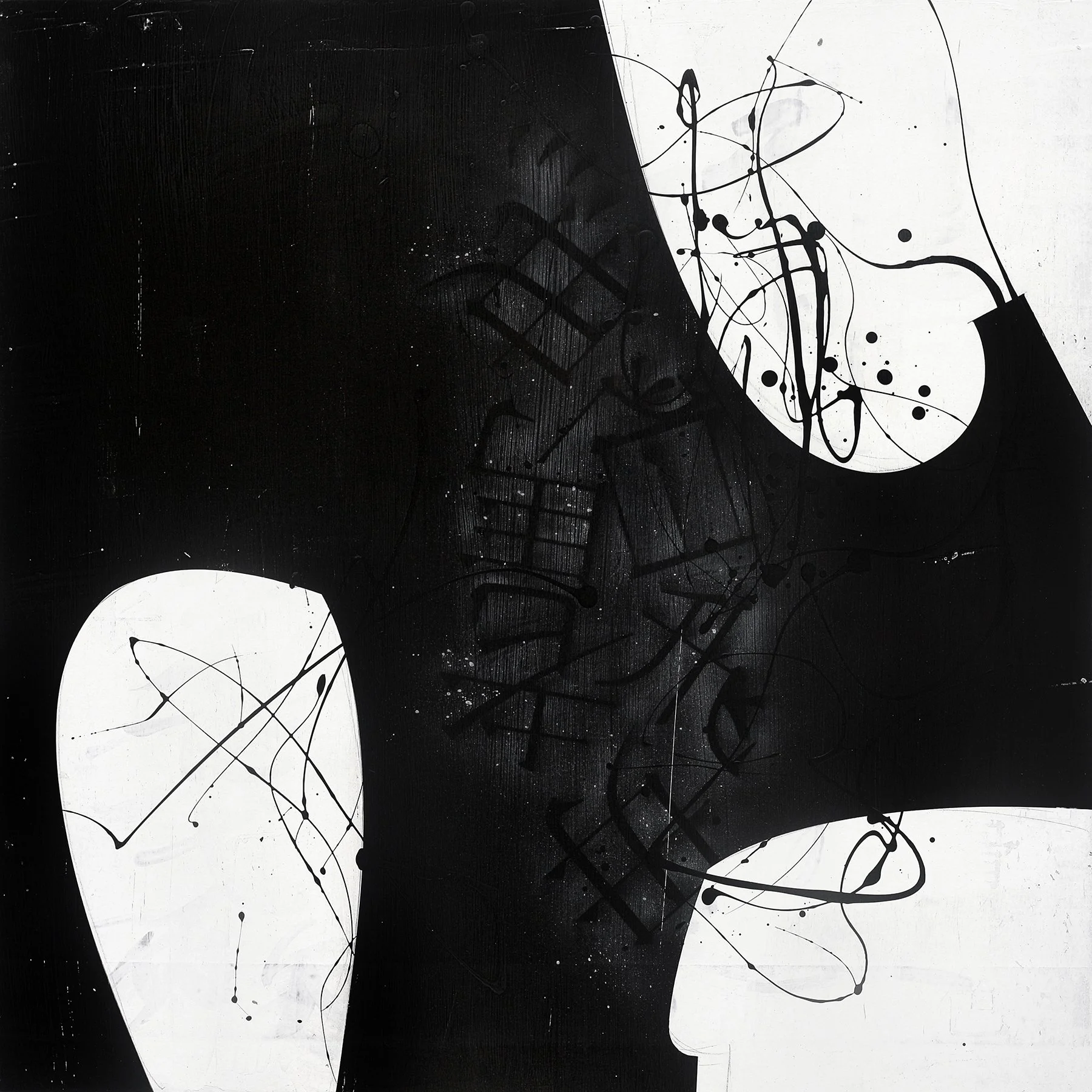
SELECTION’S STATEMENT
My work explores childhood memory, cultural identity, and the experience of distance. Growing up in China, students must learn thousands of characters to read and write, a process that becomes a fundamental part of their identity. I am particularly drawn to the use of black and white, as these tones transcend mere color, symbolizing the dualities of life and death, day and night, and the positive and negative energies we navigate daily. In my work, these elements fuse to transcend both text and medium, aspiring to reach a higher level of awareness—the heightened consciousness that is also the essence of calligraphy.
The Chinese characters in my pieces serve as visual elements and expressions that go beyond their linguistic meanings. This allows even those unfamiliar with the language to engage with the artwork through its forms, gestures, and designs. The resulting "picture" becomes more than just an aesthetic object; it reads as the essential outcome of an effort to communicate across time, space, and culture.
Through my art and its associated programs, I aim to raise awareness of contemporary Chinese, Chinese American, and American art. I also aim to foster dialogue, discussion, and understanding, bringing together an international community of artists and individuals. My work addresses a range of issues, from societal and generational change to personal narratives, while also questioning geopolitics and the dynamics of political and economic power.
John Chang

ON CALLIGRAPHY AND ART
Calligraphy, for me, embodies the intersection of the personal and the political. In China, students devote years to mastering the memorization of thousands of characters, each required to be flawlessly executed, neat, and aesthetically pleasing. This rigorous practice often serves as a conditioning tool, fostering a submission to authority. In public spaces and on walls everywhere, large calligraphic characters have long been a reminder of a collective voice, leading many to dismiss the empty rhetoric of the official media. Yet, in classical Chinese culture, the written script, or shu, is considered so sacred that it is believed to have the power to influence the natural order.
By invoking these calligraphic forms in my work, I seek to comment on the distortion of language while reclaiming the inherent energy of the written word. Rooted in my ancestral heritage, I use pigments for their aesthetic qualities and their symbolic meanings: black and white represent the dual forces of yin and yang, while red and yellow evoke happiness, wealth, and health. This connection to traditional elements grounds my past and present work, allowing me to engage with these themes as a "spiritual escapist."
During the COVID-19 pandemic, I grappled with articulating the events unfolding across the U.S. As I confronted this challenge, I turned to my art as an expression. I began to use shipping boxes and cardboard as foundational elements in my pieces, symbolizing the resilience of creativity even in isolation. These materials became a canvas that captured the realities of contemporary life.
As a contemporary artist, I believe in the power of inclusion and the multiplicity of voices. The arts are a space where we can unite, transcending differences to communicate the higher ideals of human culture. Diversity and a spectrum of perspectives are essential to advancing our ideals and fostering a deeper understanding of one another. My work honors and respects all individuals, regardless of race, gender, sexual orientation, or economic status, with the conviction that the arts have the potential to bring us together as a unified people.
John Chang






